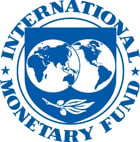
Typical street scene in Santa Ana, El Salvador. (Photo: iStock)
IMF Survey: Germany's Impressive Recovery Presents Reform Opportunity
July 12, 2011
- German economy, driven by exports, expected to grow by more than 3 percent in 2011
- Need to broaden and boost long-term growth prospects
- Broader-based growth would help Germany play more of a locomotive role in Europe
The German economy is going from strength to strength. The IMF is expecting growth of 3 percent this year, after the economy expanded by 3½ percent in 2010.

Factory in Wismar, Germany: Stronger domestic demand in Germany could help stimulate European growth (photo: Jens Buttner/AFP/Getty Images)
GERMAN ECONOMY
Following a precipitous decline in GDP at the height of the global financial crisis, Germany has now recovered all the wealth it lost. What’s more, there are now more jobs in the economy than before the crisis.
At a time when other advanced countries struggle with low growth and high unemployment, that is no mean feat. Yet Germany faces its own set of challenges. In particular, its long-term growth prospects remain low, at about 1¼ percent annually, and overly dependent on exports. This puts the country on a lower growth path than the United States, and reduces its chances of making a substantial contribution to growth in Europe, not to mention the world economy.
In an interview, Ashok Mody of the IMF’s European Department goes over the findings of his team’s analysis, carried out as part of the IMF’s regular annual health check of the German economy.
IMF Survey online: Germany’s economy has been powering ahead since the global economic crisis. Will it be able to sustain this impressive performance?
We know this is a strong cyclical recovery. The question is whether the underlying trend growth rate is also shifting up, which would imply that the country is on the cusp of a new growth miracle.
The problem is that it is almost impossible to distinguish such underlying trends in real time. The way we went about it was to ask ourselves if Germany’s performance, while impressive, stands out in some way that makes you think something bigger is going on.
What we found was that if you look at past recoveries of Germany and of other countries, the current recovery is relatively normal. If anything, it is actually somewhat weaker than the strongest recoveries that have occurred in the past. So it does not stand out, even in the context of this crisis.
Similarly, there are half a dozen countries that have experienced recoveries broadly similar to that of Germany. What these countries―which include France, Sweden, and Switzerland―have in common is that they, like Germany, did not have a major housing crash. By and large, they have done as well as Germany.
Finally, if you look back at investment rates before the crisis, they were surprisingly low. From its pre-crisis peak, the level of real investment spending fell by nearly 15 percent during the crisis. And despite the rapid recent rise, investment spending was still just below pre-crisis levels in the latest quarter. What that tells you is that German firms themselves are not making an ambitious bet that Germany is going to grow more rapidly than before the crisis. If they were, they would be investing a lot more.
For these reasons, we concluded for now that this is a robust cyclical recovery, but not yet evidently more than that. Absent new evidence, this phase will gradually dampen and Germany will return to its recent long-term growth average of between 1¼ and 1½ percent.
This analysis has implications for policymaking. If the general assumption is that a new German miracle is in the making, as has been suggested by some, then the risk in making that assumption is that needed structural reforms will be punted into the future. But instead, the opportunity now for undertaking reforms in a more stable economic environment should be seized―a similar opportunity may not present itself for a while.
IMF Survey online: Your report argues that Germany still has considerable ground to make up when it comes to productivity. Given the strong performance of its exports, this seems counterintuitive. Can you explain?
German productivity growth is actually quite impressive when it comes to the manufactured goods that make up most of the country’s exports. But it is less good when it comes to manufactured products in the information technology and communications sectors. And it is particularly lagging in the area of services. Because the services sector represents a relatively large fraction of the economy, it weighs down the overall average.
IMF Survey online: So what reforms are needed to shift the German economy onto a higher growth path?
We think efforts are needed in three areas: tax policy, education, and innovation. On tax policy, the main recommendation is to find ways to increase labor force participation and raise the investment rate.
Tax reform should aim to encourage women, lower-income groups, and the elderly to enter―or stay connected to―the labor market, rather than provide generalized tax relief. Empirical evidence suggests that such reforms do increase labor force participation and Scandinavian countries offer an encouraging example to pursue in this regard.
Increased labor force participation would also increase the incentives to invest. At the same time, further easing of corporate taxes, including through bringing the tax on equity returns on par with that on debt financing, should help stimulate investment.
In terms of education, the German authorities have already done a lot, but there is general agreement that more is needed to strengthen early childhood care and education. Reforms to strengthen Germany’s vocational training system to ensure life-long learning would also help ensure that people don’t get boxed into skills sets that become outdated.
When it comes to strengthening innovation, an important step would be to make venture capital more widely available. The traditional banking sector is not currently meeting that need, particularly when it comes to bringing unproven technologies to the market.
Other reforms we recommend include improving the insolvency regime and creating better mechanisms for universities to bring their ideas to the marketplace.
IMF Survey online: Will Germany be able to play the role of economic locomotive in Europe, not to mention the world, or is domestic demand still too weak?
More rapid German growth, coupled with stronger domestic demand, would be good for Germany and Europe, and, indeed, for the global economy. But Germany is not currently an economic locomotive in Europe. Its imports of goods from other European countries are substantially a reflection of global demand: as world trade grows, German exports rise and these cause Germany to import more. Germany’s domestic demand is less buoyant and does less to stimulate European growth in the short run.
During the crisis, consumption spending fell less sharply than did GDP, with German consumers choosing to reduce their savings to cushion the needed cuts in spending. With the recovery, real consumption spending today is marginally above pre-crisis levels. This is good news, but not enough to rebalance Germany’s economy and decrease its reliance on export-led growth.
So in essence, German GDP movements are still largely a function of world trade. When world trade does well, German exports do well and German GDP grows. However, that does not have any long-term effects on domestic demand growth. That needs to change, so that Germany will be able to pull the rest of Europe along with it on a path to higher growth. Until then, its growth impact will remain limited to countries linked to its economy through supply chains, including neighboring trading partners and new EU member states.
IMF Survey online: How exposed are Germany’s banks to the crisis in Greece?
Germany’s foreign assets are primarily invested in Europe. At the end of 2009, its foreign assets were highly concentrated in the euro area, with a gross exposure of almost 120 percent of GDP. However, the exposure of German banks to Greece, Ireland, and Portugal amounted to just 4 percent of GDP or about 1½ percent of German banking system assets.


